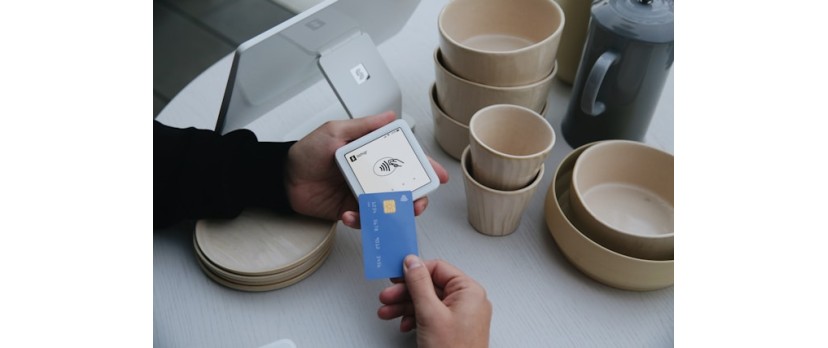In the fast-paced world of eCommerce, staying ahead means more than just selling online it requires delivering innovative, well-designed products quickly and efficiently. From concept to customer, every stage of product development must be aligned, agile, and accurate. Modern digital tools are revolutionizing this process by enabling real-time collaboration, faster prototyping, and precision manufacturing. Platforms such as cloud-based design systems, 3D modeling software, and CNC machining services are helping eCommerce brands and manufacturers turn ideas into market-ready products with remarkable speed and quality.
In this article, we’ll explore how cutting-edge technologies such as prototype manufacturing and precision machining services are reshaping design collaboration, leading to more efficient processes and stronger results.
Digital Platforms that Enable Seamless Communication
Product development has always been one of the toughest processes to coordinate input through engagement of several stakeholders. Designers, engineers, and manufacturers possess their distinct priorities, and until alignment is evident, there will be threats of delays or expensive mistakes in the project. This problem can be addressed through digital collaboration platforms that enable concentration of communication and distribute the latest information to all team members. Such tools as version control and real-time feedback enable project managers to keep track and see how the project is being adjusted and make transparent, design changes.
These are not limited to mere messaging either. Such applications as 3D visualization and interactive model reviews provide a team with an ability to study complex geometries. Remote stakeholders can also take part in design reviews without the need of having to wait for a physical meeting to thereafter provide quicker feedback that can speed up decision making. The digital visualization, when combined with organized approval processes, will guarantee companies that any potential problems will be revealed at an early stage in advance and safely solved.
Above all, digital platforms will transcend geographic and departmental borders. They make uninterrupted communication between design updates and prototype manufacturing and machining services, ensuring a smooth transition between the idea and its implementation. Such integrated communication lowers the amounts of risks in the project, speeds up the process of its innovation, and allows the establishment of the completely streamlined structure of the product development.
Prototyping as the Bridge Between Concept and Reality
Media models are perfect, but they never share the idea of how a product would behave and feel in practice. Prototype manufacturing helps to address this disparity by enabling teams to develop concepts into physical entities. Real physical models enable engineers and designers to test ergonomics, evaluate wear and tear, have important features work as they should and provide physical features to other features as needed. This is an essential step since it will help identify the challenges that could be uncovered at the digital level.
Prototyping software is accelerating this measure by providing rapid iterations. Teams are able to generate numerous variants, put them into practice, and evaluate their viability or unviability with the assistance of inside professionals and out of side stakeholders. This testing and refinement cycle enhances accuracy, end user experience and minimizes the risks of a costly error in mass production. As the design evolves, the new design successively gets closer to an optimum design.
In addition to the reducing cost, prototyping also enhances confidence throughout the development process. Both stakeholders and manufacturers have a confidence that the finished product shall be in line with expectations, and manufacturers have time to work out production principles in advance. With prototype manufacturing embedded in the collaborative working process, businesses operate a successful channel between the imaginative formulated vision and practical, market-specific solutions.
Precision Engineering for Reliable Outcomes
The success of product development rests on accuracy. Both prototypes and final products require the same level of precision to ensure they function as intended. This is where machining services can be useful in terms of the value to be determined. Through high-performing CNC system, teams are able to produce component parts that have a small and strict tolerance with intricate geometries without variation between iterations. This is vital in mass productions as well as in the initial phases of product trials.
Precision engineering is a transitional stage between concept and action when it is combined with prototype manufacturing. CNC machining creates prototypes that enable an engineer to confirm the form, fit and functionality during trial before the final full-scale production. This has reduced design risks particularly at the design stage itself, repeatability and a good assurance that new ideas will be converted to high performance parts without failure to function.
Streamlined Integration from Design to Production
Effective communication is only part of modern collaboration, but, in fact, establishing a continuous flow of work an integration of design, testing, and production. 3D digital modeling will enable the platform upon which the engineers can visualize, refine, and simulate the performance of the components before manufacturing a single part. When the models are directly streaming into manufacturing systems, the design will of the object to the physical object also becomes more reliable and quicker. This removes silos, lessens the unnecessary high-cost rework, and facilitates the development cycle.
The prototype manufacturing is crucial in this process. Preliminary models give a team the chance to confirm the ergonomics, mechanical characteristics, and perfect usability. Prototypes can bridge the divide between digital design and physical testing and come up with all the information that is required to enhance accuracy prior to scaling up. The iteration process is connected to the design process as a continuous improvement mechanism.
Lastly, machining services provide validated designs to be carried with utmost precision. CNC systems are used to produce precise digital parts which have a lot of tight tolerances and uniform quality. A combination of these integrated processes; design, prototyping and machining all types create a seamless channel which helps in speed days of innovations to be well-met and satisfy all the needs of both design and the market.
Conclusion
Collaboration in design has become more effective thanks to modern tools that connect every stage of the process. Digital platforms make communication smoother, prototyping validates concepts in real conditions, and machining ensures accuracy in production. By adopting these advancements, organizations can reduce risks, improve efficiency, and deliver high-quality products that meet user expectations.



Login and write down your comment.
Login my OpenCart Account